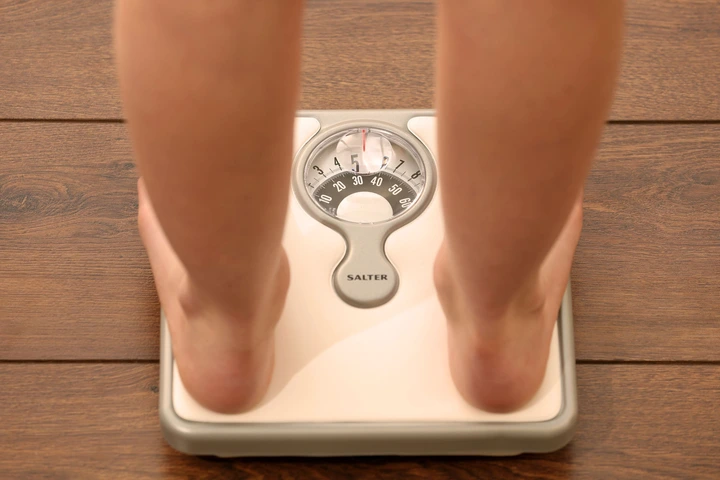As obesity experts say more than 15 million Birtons are being wrongly labelled overweight and propose a radical overhaul of the traditional BMI measure currently being used, unpicks the science of what is and what isn’t a healthy weight

View pictures in App save up to 80% data.
A year ago, supermodel Ashley Graham strutted confidently down the runway for Dolce and Gabbana, showcasing her stunning figure in sky-high heels. With radiant skin and her luscious hair cascading around her sculpted jawline, she epitomized health and vitality. True to her profession, her Instagram is filled with glimpses of her fitness routine, featuring her lifting weights or practicing yoga.
“I spend a lot of time at the gym,” she shared with an interviewer. “I usually hit the gym about five times a week. But Graham is not your typical slender model. With a rumored BMI exceeding 29, the 35-year-old mother of three and body-positive advocate was teetering on the edge of obesity, which is defined as a BMI of 30 or higher.”
But can people who workout and still weigh in as overweight really be as healthy as claim to be? After all, we are constantly warned of the risks of piling on the pounds. A study of more than 11,000 adults found that people who were overweight or obese were twice as likely to have conditions including high blood pressure, diabetes and osteoarthritis.
However, experts are now proposing a new way to define and diagnose obesity, reducing the emphasis on the controversial body mass index (BMI). Under new recommendations, obesity would no longer be defined solely by BMI, a calculation of height and weight, but combined with other measurements, such as waist circumference, plus evidence of health problems tied to extra pounds.
According to preliminary analysis, the revised criteria may result in approximately 20% of individuals previously categorized as obese no longer fitting that definition. Conversely, around 20% of those experiencing significant health issues despite having a lower BMI could now be classified as clinically obese, according to experts.
This could be exciting news for those eagerly anticipating the return of baggy sweater season. However, what explains the difference in health outcomes between individuals who are healthy and overweight versus those who face significant health issues?
The answer, says Dr Giles Yeo, a neuroscientist at the University of Cambridge and author of the book Why Calories Don’t Count: How We Got the Science of Weight Loss Wrong, lies in our genetics and hormones. “People think you lose and gain fat cells when you lose or gain weight,” he says, “but fat cells that sit just under the skin act like balloons, filling with fat and increasing with size as you gain weight.”

View pictures in App save up to 80% data.
Fat stored in this manner is generally considered safe, but the capacity for fat storage in our cells can differ significantly from one individual to another. According to Dr. Yeo, when these cells reach their limit, fat can begin to infiltrate organs and muscles, leading to serious metabolic issues. “As soon as we surpass our genetically predetermined storage capacity, illness will follow,” he explains. “This is why some individuals with a larger body size may never develop diabetes, while some who are thin might.”
The distribution of body fat is just as crucial as the amount itself, which is why women generally face lower risks. Dr. Sarah Berry, an associate professor in nutritional sciences at King's College London, leads the nutritional research for the Zoe Predict program that investigates how food impacts health.
“According to her, visceral fat located in the upper body—often referred to as a ‘beer belly’ or an apple shape—is ‘metabolically active.’ This means it increases the production of substances that influence chronic conditions like inflammation and type 2 diabetes. On the other hand, fat found in the thighs and hips tends to be less metabolically active and is generally considered more harmless.”
According to Dr. Berry, body shape is influenced by genetics and hormones, explaining that "men typically store more fat around their abdomen, whereas women are more likely to accumulate fat in their hips and thighs."
Consequently, men tend to accumulate more visceral fat compared to women, even when their BMI is identical. This is why Roy Taylor, a professor of medicine and metabolism at Newcastle University, notes that “men are more likely to develop type 2 diabetes at a lower BMI than women.”
However, at menopause, things can go haywire. Surprisingly, studies have recently shown that our metabolisms only start to slow down when we reach 60. But many women will complain of mid-life spread long before this. In an Australian five-year study of women aged 46 to 57 (published in the journal Climacteric in 1999), menopause appeared to trigger an increase in abdominal, or visceral, fat.
“During menopause,” Dr. Yeo clarifies, “there is a significant drop in oestrogen levels. As a result, women experience an increased ratio of testosterone to oestrogen, which causes their bodies to take on more male-like hormonal characteristics. This shift often results in weight gain around the waist and noticeable changes in body shape associated with menopause. Generally speaking,” he adds, “if your waist measurement exceeds that of your hips, you face a greater risk of metabolic diseases, irrespective of your gender.”
Is it possible to minimize that risk? Absolutely, according to Dr. Yeo. He explains, “Physical activity significantly contributes to overall health, regardless of whether it affects your weight at all. If you have more muscle mass, you will invariably be in better health compared to someone of the same weight who has less muscle.”
But the good news is visceral fat is easier to eliminate with exercise than other types. A 2013 review from the University of Antwerp reported that strength training and aerobic exercise were equally effective in whittling waists, even when people didn’t lose weight per se. It suggested people aim for at least ‘moderate to vigorous’ intensity exercise for best results, which is anything that makes you warm and sufficiently breathless that you can talk but not sing.

View pictures in App save up to 80% data.
Looking for additional motivation? A comprehensive study conducted in 2012 revealed that physically fit individuals who are overweight or obese have a 60 percent lower risk of premature death compared to unfit individuals with a normal body mass index (BMI). The researchers concluded, “These results indicate that being fit while overweight or obese may be more advantageous than being of normal weight but unfit.” Although the study did not endorse a specific fitness regimen, it advised that individuals should strive to burn at least 1,000 calories each week through physical activity to achieve a meaningful decrease in the risk of mortality.
However, this doesn't imply that individuals with a higher weight should disregard concerns about weight loss, even if they dedicate significant time to exercising at the gym. At the diabetes conference, Professor Matthias Blüher from the University of Leipzig and Helmholtz Centre in Munich highlighted earlier research indicating that those classified as "healthy obese" still face an increased risk of coronary heart disease, cerebrovascular conditions, and heart failure compared to those within a normal weight range.
Other specialists agree with this viewpoint. According to Professor Taylor, although physical activity is beneficial, "weight remains the primary factor in the onset of type 2 diabetes." His studies indicate that shedding approximately two stone can help many individuals reverse the condition. Additionally, obesity is linked to various health issues such as acid reflux, sleep apnoea, and arthritis affecting the knees and hips, and it may also elevate the risk of certain cancers.
Additionally, Dr. Yeo points out that it's important to think about the long-term effects of having extra body fat. "Your genetic makeup might allow you to be bigger and still healthy, but it doesn't imply that shedding a few pounds wouldn't be advantageous. Conversely, there are individuals who are naturally predisposed to being heavier, and that's just part of life."
The straightforward principle appears to be this: if you maintain a nutritious diet, engage in physical activity, can ascend stairs without becoming winded, and enjoy playing with your kids and grandkids even if your BMI is classified as overweight, then achieving better health doesn't always mean losing weight. As Dr. Yeo puts it: “Your optimal weight will naturally fall into place.”










